People ask me sometimes where my ideas come from.
Well, that’s not exactly true, nobody asks me that, but all kinds of famous people say people ask them that so I figured I’d jump on the bandwagon.
But if they DID ask me, this is what I’d say (at least as far as level design). I design a level one “setup” at a time, then I link all the setups together to form a level. When I’m thinking of a specific setup, here is the basic process I go through:
WARNING: GET READY FOR A TON OF BULLETED LISTS AND SENTENCE FRAGMENTS!!!
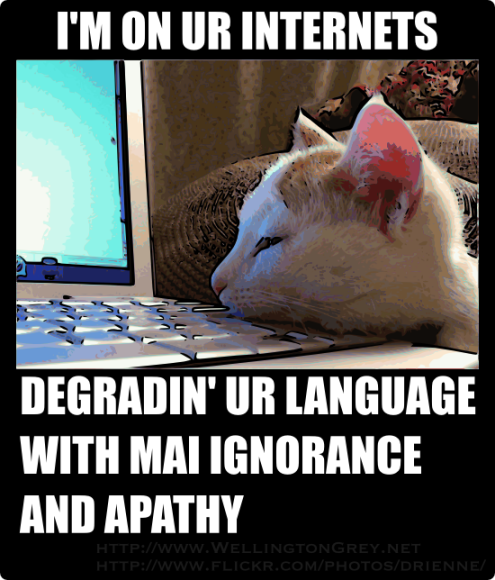
Intensity Curve
- How many setups are in the level?
- On a scale of 1 to 10, rate each setup in terms of how intense (difficulty + energy) it should be. These numbers should go up over the course of the level, but we should have some noise in this regard (see image below).

Difficulty / Intensity
- Where is this setup located on the “intensity” curve of the level?
- Does the intensity curve want a combat setup or a non-combat setup here? If we want the intensity to die down a bit, non-combat setups help with that.
- If it’s a combat setup, based on the intensity curve, determine the number of enemies and the combination of enemies in the setup.
- Never repeat a setup. Always introduce an enemy before you use multiples of that enemy or use the enemy in combination with other enemies. (Enemy A, Then Enemy B, then two A’s, then an A with a B, then two Bs, then two As and two Bs, etc). Choose the enemies based on “archetypes” (see below).
Terrain Features
- Gaps: Horizontal separators. Need to determine:
- Width
- The path around or over the gap
- The fiction or type of the gap (cover, a river, a pit, etc…)
- Ledges: Vertical separators. Need to determine:
- Height (usually in two increments: Short and Tall)
- The path to the top of the ledge
- The fiction or type of the ledge (a car, a balcony, a platform…etc)
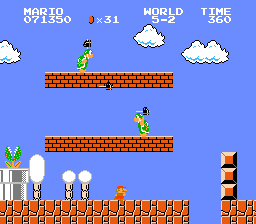
Area Shape
- Determine the size (Should it feel tight, normal, or vast)
- Make sure enemy entrance or spawn points are visible from the player’s entrance point
- Reveal VS Recon (Is the player surprising the enemies or are the enemies surprising the player. This should vary based on the intensity curve)
- Make sure the area contains or has a view of some kind of focal point. The action should revolve around or serve to frame this visual focus.
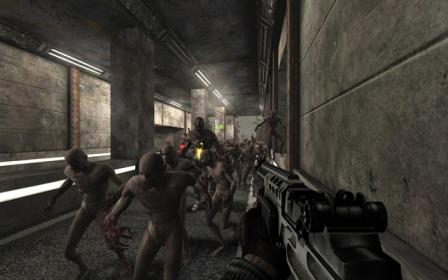
Enemy Archetypes
- Near: Attacks close-up
- Far: Attacks from far away
- Heavy: Can be near or far, but should be player’s top priority if all else is equal
- Popcorn: Can be near of far. Not dangerous unless in groups. Should make the player feel strong.
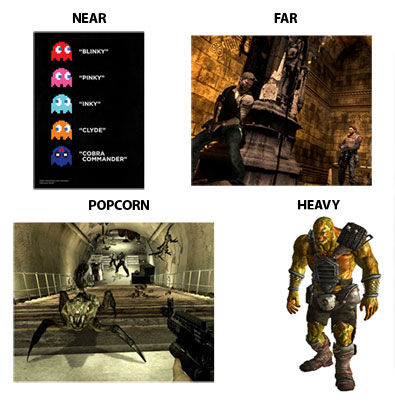
Enemy Idle Behavior
- If the player is surprising the enemies, what are they doing before he triggers them? (Patrolling, idling, juggling, etc…)
Enemy Intro Behavior
- How is the enemy introduced?
- Spawn-in: The enemy appears (Teleport, jump in, etc)
- Run-in: The enemy comes in from off-screen (run ,fly, etc)
- None, the enemy is already there when the setup starts
- These should be varied based on the intensity curve.
Enemy Trigger Zones
- Where does the player have to be for the enemies to activate and begin attacking?
- Where does the player have to be for the enemies to stop following him once they’re activated?
- Where does the player have to be for the enemies to deactivate?
Enemy Location / Placement
- Must be visible to the player from the entrance to the area
- Do we want enemies to clump or be spaced out?
- Are the enemies close to or distant from the entrance
- How close or far do we want them from terrain features? (Over a gap, up on a ledge, behind cover, etc…)
Place important items
- E.g. Explody barrels, health, etc
- Usually place close to a wall or suggestively (an explody barrel right next to a group of guys)
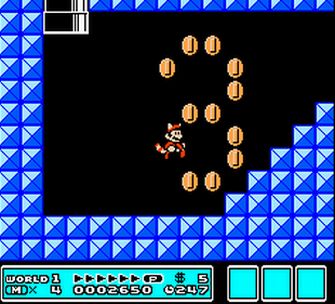
Place gravy items
- Rewards: (Crates, coins, etc)
- Pure gravy: E.g. Breakable scenery
- Visual gravy: Non-breakable scenery, usually to provide movement or points of interest. (Blinky lights, scrolling water, plants, etc…)
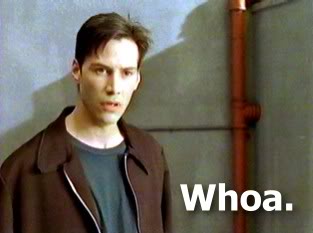
For enemy idle animation, I always think of Ratchet when Tony asked the animators for extra enemy animations, and then had them play rock-paper-scissors. 🙂